#Recurvirostra americana
Text
BOTD: American Avocet
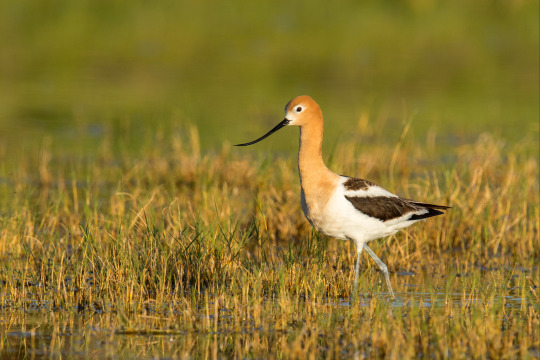
Photo: Mick Thompson
"Around lake shores and tidal flats, especially in the wide-open spaces of the west, flocks of elegant American Avocets wade in the shallows. They often feed while leaning forward, with the tips of their bills in the water and slightly open, filtering tiny food items from just below the surface. Sometimes a flock will feed this way in unison, walking forward, swinging their heads rhythmically from side to side."
- Audubon Field Guide
#birds#american avocet#birds of north america#north american birds#avocets#shorebirds#wading birds#waders#birds of the us#birds of canada#birds of mexico#birds of central america#birding#birdblr#birblr#bird of the day#Recurvirostra americana
107 notes
·
View notes
Photo

American Avocet
#american avocet#avocet#Recurvirostra americana#Charadriiformes#Recurvirostridae#Recurvirostra#bird#upl
886 notes
·
View notes
Photo

American Avocet (Recurvirostra americana)
© Ethan Denton
71 notes
·
View notes
Text

American Avocets (Recurvirostra americana)
7 notes
·
View notes
Text

American Avocet - Leonabelle Turnbull Birding Center, Ross Avenue, Port Aransas, Texas, USA
Joshua J. Cotten
Scientific name: Recurvirostra americana
Conservation status: Least Concern (Population stable)
Family: Recurvirostridae
Mass: 12 oz
Life span: about 9-15 years
Class: Aves
Genus: Recurvirostra
The American avocet is a large wader in the avocet and stilt family, Recurvirostridae, found in North America. It spends much of its time foraging in shallow water or on mud flats, often sweeping its bill from side to side in water as it seeks crustacean and insect prey.
American Avocets are medium-distance, continental migrators from southern Canada to Mexico. In Canada they are known to congregate in flocks of up to 100 birds. They are monogamous and loosely colonial and use loud and melodic calls, group distraction displays, and mobbing of a predator as their typical defense.
American avocets commonly are found on mudflats, in saline lakes, in fresh water and saltwater marshes and on coastal bays. They may be found in migration from March to May, and again from July to October. Their nesting grounds are in the Great Basin region of the western United States.
#Leonabelle Turnbull Birding Center#Ross Avenue#Port Aransas#Texas#USA#US#United States#United States of America#North America#Wildlife#TXWildlife#Birds#Bird#American Avocet#Recurvirostra americana#Recurvirostridae#Aves#Recurvirostra
1 note
·
View note
Text
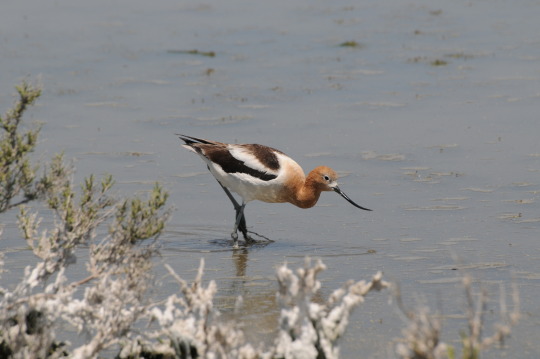
American Avocet (Recurvirostra americana)
#inaturalist#naturalist#nature#ecology#zoology#biology#photography#nature photography#wildlife photography#birds#bird#birdblr#birding#orinthology#hawks photos#american avocet
28 notes
·
View notes
Video
Morning reflection by Georgie Alexon
Via Flickr:
This photograph of an American Avocet was taken just outside of Calgary, Alberta, Canada Females are similar in appearance to males but with a shorter and more upwardly-curved bill, male bills are longer and straighter. They are the only avocet with distinct breeding and non-breeding plumages. During the breeding season, the feathers turn a rusty orange color, but in the winter, they are grayish white. I believe this is a male but please correct me if I am wrong. -Recurvirostra americana
#american#avovet#shorebird#bird#wildlife#nature#photography#canon#eos#outdoors#alberta#cananda#oiseaux#countryside#reflection#colours#red#white#green#pond#water#day#Recurvirostra americana#Recurvirostridae#spring#morning#aves#vogel#colors#flickr
20 notes
·
View notes
Photo

American Avocets (Recurvirostra americana), Cochise Lake, Willcox, Arizona.
146 notes
·
View notes
Text


Avocets (Recurvirostra americana) as the waves recede (two views).
Morro Strand State Beach, Morro Bay, California. 27 Jan 2020.
2 notes
·
View notes
Text

[168/10,977] American Avocet - Recurvirostra americana
Order: Charadriiformes
Family: Recurvirostridae (stilts and avocets)
Genus: Recurvirostra (avocets)
Photo credit: Ad Konings via Macaulay Library
#birds#American Avocet#Charadriiformes#Recurvirostridae#Recurvirostra#birds a to z#undescribed#0% - 25%
4 notes
·
View notes
Text
American Avocet (Recurvirostra americana)

This American avocet was at the Sabine National Wildlife Refuge in Louisiana.
"American Avocet chicks leave the nest within 24 hours of hatching. Day-old avocets can walk, swim, and even dive to escape predators." - allaboutbirds.org
#photo#photography#photographer#photographylovers#birds#birdwatching#birds of north america#birdsphotography#birdphotography#birdlovers#birds nature#birdingphotography#american avocet#bird#bird photography#bird watching#birding
3 notes
·
View notes
Photo
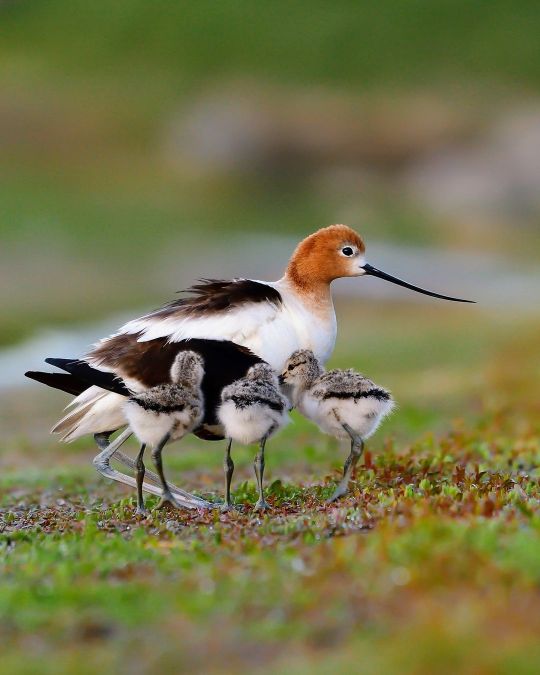
American Avocet
#american avocet#avocet#Recurvirostra americana#Charadriiformes#Recurvirostridae#Recurvirostra#bird#upl
145 notes
·
View notes
Text

American Avocet (Recurvirostra americana)
taken at the Aquarium of the Pacific in Long Beach, California
status: least concern
Very interesting shore bird that wades in generally 8 inches of water seeking bugs, crustaceans and sometimes seeds with its long upturned bill.
#American Avocet#Avocet#Recurvirostra americana#bird#animal#wildlife#aquarium of the pacific#photo#photography#canon#canon eos 6D mark ii
7 notes
·
View notes
Photo


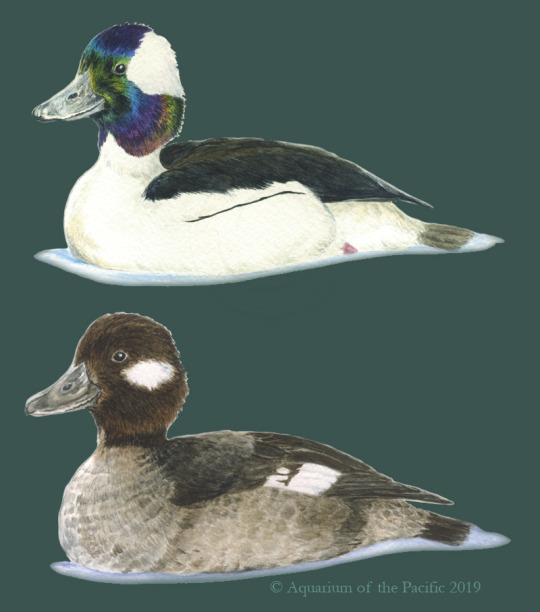
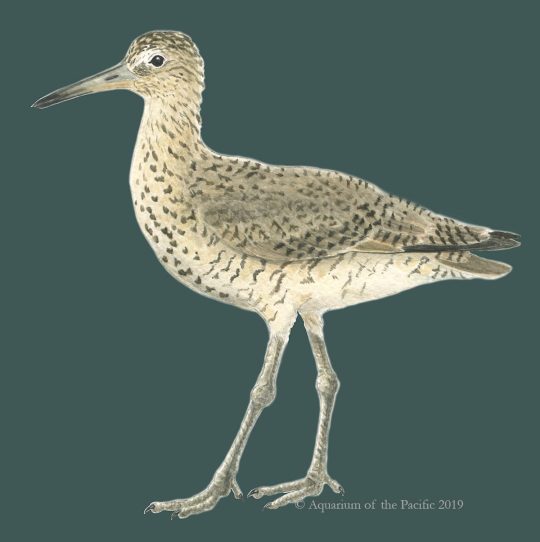
We redid the Shorebird signage at work recently, replacing art that I did over 10 years ago. All are pencil and watercolor with a little post work in Photoshop, referenced from multiple photos.
In order not to make this a super long post, I’m splitting it up into two posts.
From top to bottom:
American Avocet (Recurvirostra americana) I think the head ended up a little small and he’s looking a little nervous
Black-necked Stilt (Himantopus mexicanus) Somehow, in my initial art, I didn’t capture the ridiculouss length of their legs so some post work was done to lengthen the legs.
Bufflehead (Bucephala albeola) The one I think turned out the best. It was another chance to tackle tricky irridescence.
Willet (Tringa semipalmata) Colors got a little muddy in this one, but I think the pose come out right.
#art#my art#illustration#Shorebirds#birds#Aves#animals#American Avocet#Black-necked Stilt#Bufflehead#Willet#Recurvirostra americana#Himantopus mexicanus#Bucephala albeola#Tringa semipalmata#work art#Aquarium of the Pacific#ducks#watercolor#Adobe Photoshop#science illustration#animal
12 notes
·
View notes
Text

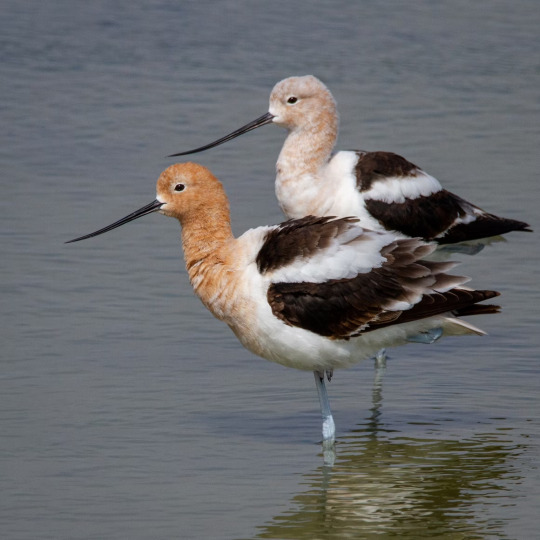



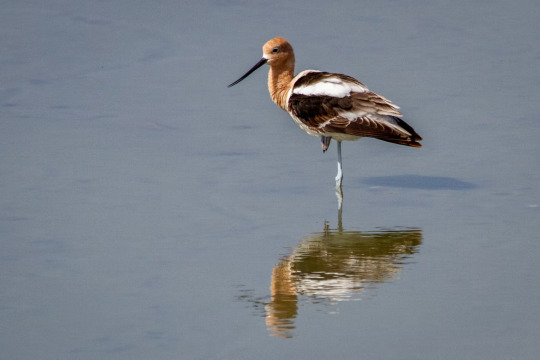
American Avocet - Leonabelle Turnbull Birding Center, Ross Avenue, Port Aransas, Texas, USA
Joshua J. Cotten
Scientific name: Recurvirostra americana
Conservation status: Least Concern (Population stable)
Family: Recurvirostridae
Mass: 12 oz
Life span: about 9-15 years
Class: Aves
Genus: Recurvirostra
The American avocet is a large wader in the avocet and stilt family, Recurvirostridae, found in North America. It spends much of its time foraging in shallow water or on mud flats, often sweeping its bill from side to side in water as it seeks crustacean and insect prey.
American Avocets are medium-distance, continental migrators from southern Canada to Mexico. In Canada they are known to congregate in flocks of up to 100 birds. They are monogamous and loosely colonial and use loud and melodic calls, group distraction displays, and mobbing of a predator as their typical defense.
American avocets commonly are found on mudflats, in saline lakes, in fresh water and saltwater marshes and on coastal bays. They may be found in migration from March to May, and again from July to October. Their nesting grounds are in the Great Basin region of the western United States.
#Leonabelle Turnbull Birding Center#Ross Avenue#Port Aransas#Texas#USA#US#Wildlife#TXWildlife#Birds#Bird#United States#United States of America#North America#American Avocet#Recurvirostra#Aves#Recurvirostridae#Recurvirostra americana
1 note
·
View note
Photo

American avocet (Recurvirostra americana)
94 notes
·
View notes